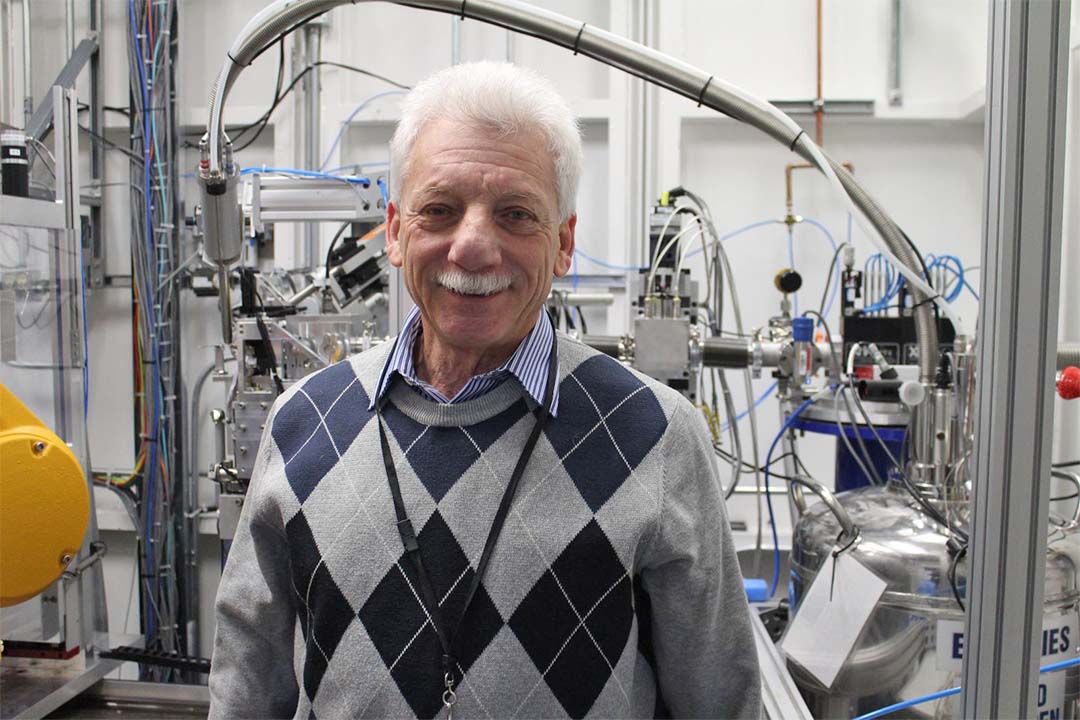
USask research a step closer to shedding light on bacterial infection process
SASKATOON – Before you got those nasty gut cramps that sent you scurrying to the washroom, or you came down with a fever, chills, and clogged airways thanks to pneumonia, various cells in your body were battling bacterial invaders who showed up armed with a sophisticated toolbox to overcome the body’s defences.
The content of this toolbox are proteins called effectors, and their mechanism of attacking cells to cause disease has been tough to pin down. Just ask microbiologist Dr. Miroslaw Cygler (PhD) at the University of Saskatchewan’s College of Medicine, who has been studying effectors for more than a decade to understand their role in bacterial infections.
Common bacteria such as E. coli and salmonella each have 30-50 of these specialized proteins, whereas Legionella, a highly infectious pathogen spreading through inhaling microscopic water droplets containing the bacteria—say from the spray of a shower, faucet or whirlpool, or water from the ventilation system in a large building—contains as many as 300-350 effectors, said Cygler.
The action of each effector protein can be different, but many have partially overlapping functions. That makes very challenging to figure out what each protein is doing and to understand their individual contributions to disease development, Cygler said.
Some bacteria types attach to the outside of a cell—different bacteria select different cell types—and use a syringe-like apparatus to inject their effectors through the cell membrane into the cell, he said. Other bacteria enter the cell when the cell membrane engulfs the bacterium in a process called phagocytosis, and then begin releasing their effectors.
“Of course, the cell has many defence mechanisms to counter that, and the bacteria have another set of mechanisms to combat those responses,” Cygler said. “So, there is this huge tug-of-war, and depending on the individual’s immune system, some people get really sick, others get a little sick and quickly recover.
Now, in a paper published in Proceedings of the National Academy of Sciences (PNAS), the prestigious, highly cited multidisciplinary science journal, Cygler and collaborators from an Australian laboratory report they have identified a target of the enteropathogenic E. coli bacterium effector protein called NleH.
This bacterium targets human epithelial cells. NleH recognizes a protein called Eps8 and disrupts its normal cellular function, which facilitates the infection process. Enteropathogenic E. coli is a significant cause of diarrheal disease in children under age 2 in lower income countries.
Cygler’s lab at USask, in collaboration with Professor Elizabeth Hartland’s group at the Hudson Institute of Medical Research at Monash University in Australia, has opened the door to new discoveries involving effector proteins.
“Our research led to a more thorough understanding of the cellular function of this effector and provided avenues for further investigations,” Cygler said.
“But we are not at the point yet where we say we can say that this NleH protein is a good target for antibiotics development that would lead to controlling E. coli infection”, said Cygler. “We have expanded our knowledge about the E. coli effectors’ mechanisms, but more research is required to fully understand the complex interplay between this bacterium and cellular responses of human epithelial cells.”
Cygler’s team and other international collaborators will continue the long-term process of investigating all the types of effectors in gram-negative bacteria, trying to discover their pathogenic processes, and investigating which would be good targets for inhibiting or modulating in order to control diseases.
He described science as a parallel process, where discoveries from many sources converge over time to lead to solutions.
“It frequently takes a long time from initial ‘blue sky’ research results to discovering their commercial applications,” Cygler said. “If you look at Nobel prizes, often they are given for discoveries made 20-30 years ago. At the time people didn't see many applications for them, but they are later awarded because they led to unpredicted benefits,” he said.
“So, it’s curiosity as usual that leads us to places that we don't know what they mean, but eventually we find out that they're very important.”
-30-
For media inquiries, contact:
Victoria Dinh
USask Media Relations
306-966-5487
victoria.dinh@usask.ca

